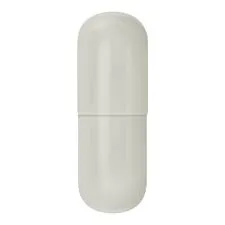
Nov . 01, 2024 20:29 Back to list
Exploring the Applications and Benefits of Hydroxypropyl Methyl Cellulose in Various Industries
Hydroxypropyl Methyl Cellulose (HPMC) is a versatile and widely used polymer that belongs to the cellulose ether family. Known for its thickening, binding, and film-forming properties, HPMC is commonly employed in various industries, including pharmaceuticals, food production, cosmetics, and construction. Its Chemical Abstracts Service (CAS) number is 9004-65-3, which uniquely identifies this compound and allows for easier Research and identification in scientific literature and databases.
One of the critical attributes of HPMC is its ability to dissolve in cold water, forming a clear and viscous solution. This characteristic makes it an excellent thickening agent in food products, where it helps to maintain texture and stability. For example, HPMC is used in sauces, dressings, and baked goods to improve mouthfeel and prevent separation. Additionally, it acts as a fat replacer in low-fat food formulations, allowing manufacturers to create healthier alternatives without compromising on taste or consistency.
HPMC's properties extend to the construction industry as well, where it functions as a crucial component in cement and gypsum-based products. It enhances the workability of mortars and plasters, allowing for improved adhesion, water retention, and ease of application. This results in superior construction materials that can withstand various environmental conditions and provide longevity to structures.
hydroxypropyl methyl cellulose cas number

In the cosmetic and personal care industry, HPMC is valued for its ability to create a smooth and even texture in products. It is often found in creams, lotions, and gels, helping to stabilize emulsions and providing a pleasant feel on the skin. Additionally, its film-forming ability makes it ideal for use in hair products, where it can contribute to a long-lasting hold for styles.
Despite its many advantages, HPMC is not without its challenges. The reactions and formulations involving HPMC require careful consideration, as the nature of its viscosity can lead to altered product performance if not properly managed. Moreover, there is a growing demand for natural and sustainable products in various industries, prompting researchers and manufacturers to explore alternatives to synthetic polymers like HPMC.
In conclusion, Hydroxypropyl Methyl Cellulose is a crucial ingredient across numerous sectors, providing functionality that enhances product performance and user experience. Its CAS number, 9004-65-3, signifies its recognition in the scientific community. As industries continue to innovate and adapt to consumer preferences, the role of HPMC may evolve, but its significance in formulation science will remain undeniably prominent. As research progresses, we may soon find new applications and formulations that harness the capabilities of this remarkable polymer.
-
What is HPMC?
NewsJun.06,2025
-
Understanding Redispersible Powder: The Future of Construction Materials
NewsJun.06,2025
-
Understanding RDP Powder: The Ultimate Solution for Your Construction Needs
NewsJun.06,2025
-
Pure HPMC: The Ideal Solution for Modern Construction and Building Materials
NewsJun.06,2025
-
Methyl Hydroxyethyl Cellulose: A Versatile Chemical Compound
NewsJun.06,2025
-
Hydroxyethyl Cellulose Power: The Essential Chemical for Various Industries
NewsJun.06,2025







